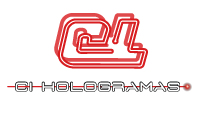First patient treated in CereVasc clinical trial of eShunt(TM) System for communicating hydrocephalus
BOSTON, Feb. 10, 2021 /PRNewswire/ -- CereVasc, Inc., a clinical-stage, medical device company developing novel, minimally invasive treatments for neurological diseases, has treated the first patient in a study of its eShunt System, an investigational device intended to treat communicating hydrocephalus (CH), one of the most common neurological conditions worldwide. Representing the first minimally invasive treatment for CH, the eShunt device offers the potential to result in significant benefits over current treatment, a half-century-old neurosurgical procedure associated with frequent failure, infection risk and high costs. Study data will be available in 2021.
"For nearly 30 years, a groundswell of clinicians, patients, professional societies and government agencies have advocated aggressively for improvements to CSF shunts," said Dr. Carl Heilman, co-inventor of the eShunt System, Neurosurgeon-in-Chief at Tufts Medical Center, Chairman of its Department of Neurosurgery. "While attempts to address this call to action followed, CSF shunts continue to fail frequently, leading to unnecessary patient burdens and high costs." Adel Malek, M.D., Ph.D., co-inventor of the eShunt System, Director, Cerebrovascular and Endovascular Surgery Division at Tufts Medical Center continued, "We believe the eShunt System represents an opportunity to transform the quality and effectiveness of treatment for communicating hydrocephalus through a minimally invasive endovascular approach. The eShunt could improve patient outcomes and quality of life while potentially decreasing the high costs and risks associated with existing treatment."
The ETCHES I (Endovascular Treatment of Communicating Hydrocephalus with the eShunt System) trial is taking place at Clinica Sagrada Familia (Buenos Aires, Argentina) under the direction of Principal Investigator Dr. Pedro Lylyk. A global leader in neurosurgery, Dr. Lylyk is chair of Neurosurgery and Hemodynamics at the University of Buenos Aires, professor of the Department of Vascular Medicine at the University of El Salvador, and professor of Endovascular Surgery at the University of Ciencias Empresariales (UCES). Commenting on the study, Dr. Lylyk said: "Taking part in such an important trial with a device that has the potential to bring meaningful innovation to a half-century-old standard of care is thrilling for the entire team at Clinica Sagrada Familia here in Buenos Aires. We believe patients will experience significant benefits with the eShunt System. We are pleased to have our first patient treated and look forward to continuing the trial and generating data that will support the ongoing clinical evaluation of the System."
"The failure rates for invasive brain surgeries to treat hydrocephalus patients are unacceptably high," said Dan Levangie, Chairman and CEO of CereVasc, Inc. "The eShunt System has been designed to transform a half-century-old standard of care that we believe is in dire need of an overhaul. The ETCHES I study is a welcome development for clinicians, who have long sought a better way to treat CH. It's also a significant milestone for CereVasc, which supports our regulatory pathway and brings us closer to potentially delivering our novel device to a very deserving patient and clinician community."
The eShunt System offers the first minimally invasive treatment for CH. It's designed to eliminate the need for a craniotomy or surgical opening into the skull, passage of a catheter through white matter of the brain, subcutaneous tunneling across the chest and abdomen for placement of a long outflow catheter into a second surgical incision in the abdomen. By contrast, a clinician places the eShunt Implant through a leg vein using X-ray guidance. The result of the minimally invasive approach brings the potential to dramatically reduce infection risk and several other common causes of VPS failure. Once in general use, clinicians will be able to deploy the eShunt Implant in approximately an hour, potentially supporting an outpatient, day-surgery alternative to traditional neurosurgery. Co-Inventors and CereVasc Co-Founders Dr. Carl Heilman and Dr. Adel Malek conceived the device at Tufts Medical Center, which licensed it to the company.
Diana Gray, President and CEO of the Hydrocephalus Association, commented, "Hydrocephalus affects over 1 million people in the United States alone yet the primary treatment has remained the same for over 50 years. That's why we support the development of new innovations that could improve the lives of people living with this condition."
About Hydrocephalus
Hydrocephalus is the abnormal buildup of fluid in the brain, which can place dangerous pressure on brain tissue. Without treatment, it can be fatal. Current treatment for CH typically requires an open neurosurgical procedure to place a ventriculo-peritoneal shunt (VPS), which is designed to drain excess cerebrospinal fluid from the brain and surrounding tissues. However, the number of failures amongst the over 100,000 shunt procedures performed each year in the U.S. and Western Europe remains a significant problem in treating hydrocephalus. VPS failures due to infection, over-drainage and occlusive complications can lead to additional surgeries, longer hospital stays, developmental disabilities and higher patient morbidity. The procedure itself is invasive, costly and requires post-procedure hospitalization of up to four days and strict adherence to pain management protocols.
About CereVasc, Inc.
Surrounding Massachusetts' healthcare hub, CereVasc, Inc., is a clinical-stage, venture-funded, medical device company focused on the development of novel, minimally invasive treatments for patients with neurological diseases. Its flagship product, the eShunt(TM) System, is intended to offer the first minimally invasive treatment for communicating hydrocephalus (CH) and an improvement to the current standard of care. The eShunt System includes an endovascularly implantable cerebral spinal fluid (CSF) shunt and CereVasc's patented delivery components, which are designed to treat CH without invasive surgery, extended hospitalization, post-procedure pain management and the risk of infection. For additional information, please visit our website at www.cerevasc.com.
The eShunt(TM) Device is an investigational device and not available for sale within or outside the United States.
View original content:http://www.prnewswire.com/news-releases/first-patient-treated-in-cerevasc-clinical-trial-of-eshunt-system-for-communicating-hydrocephalus-301226060.html
SOURCE CereVasc, Inc.




